How to make rare materials open access
It is one of Kyoto University Library Network's missions to securely preserve the rare book and manuscript collections Kyoto University holds and provide them for the use of researchers, in order to support academic research and contribute to society. As a means to share the information described in these rare materials more widely, Library Network has been digitizing them and making the data available on the internet.
Following are the steps of digitizing rare materials for public use on the Internet.
Preliminary checking
Preliminary checking is conducted to prioritize rare materials to be digitized according to their importance and users’ demand for them and record their physical condition and amount.
(Photos from left: Rare materials waiting to be digitized, preliminary checking, and rare materials with strips inserted between pages that have attachments or damaged parts)
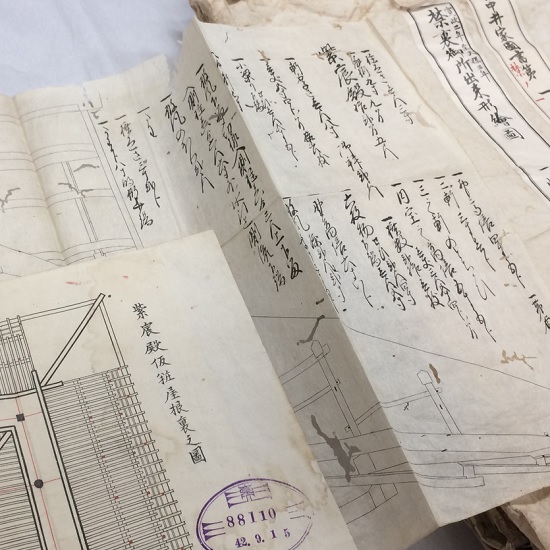
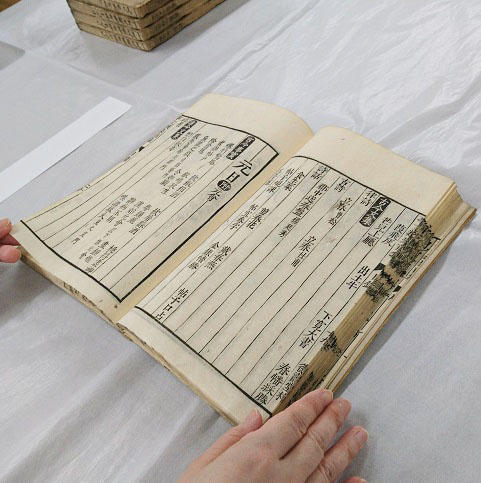
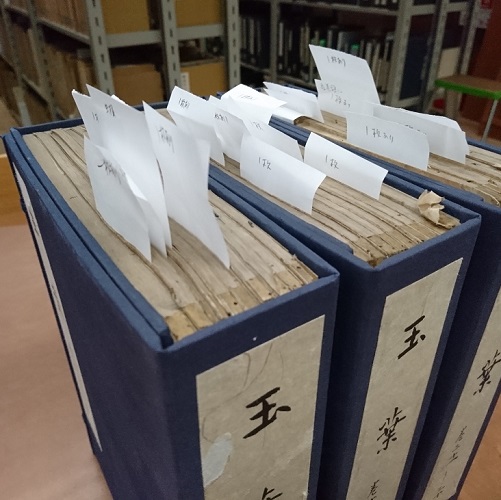
Restoration of damage
The damaged part of the materials, if any, is restored or conserved in the most suitable ways, such as urauchi (裏打ち), sukihame (漉き填め), and itotoji (糸綴じ). Photos might be taken to record the physical condition of the materials before and after the restoration.
(Photos from left: Restoration, rare material before restoration and rare material after restoration)
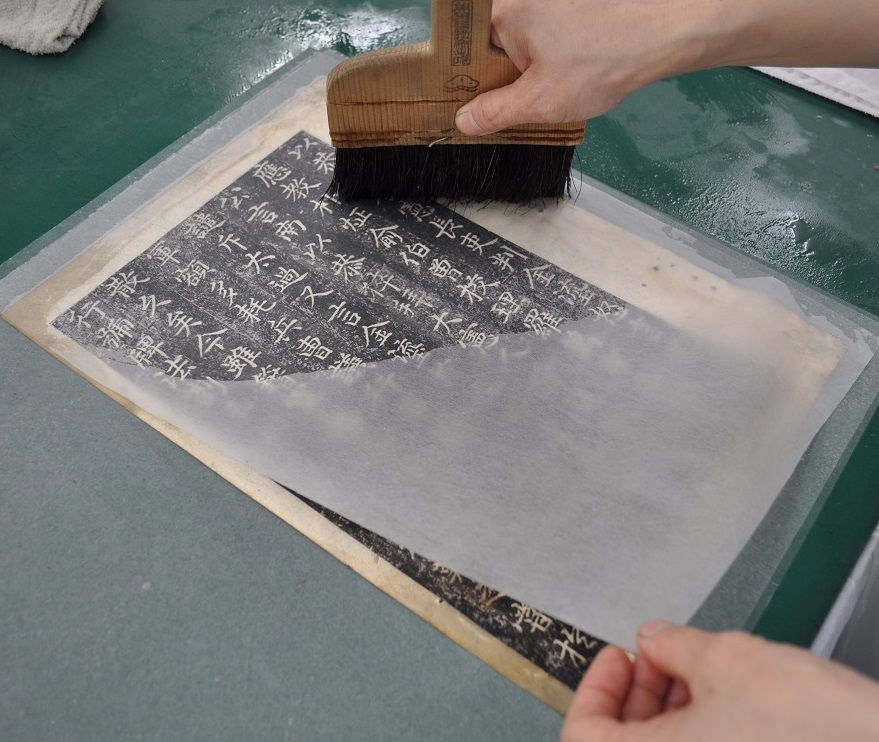
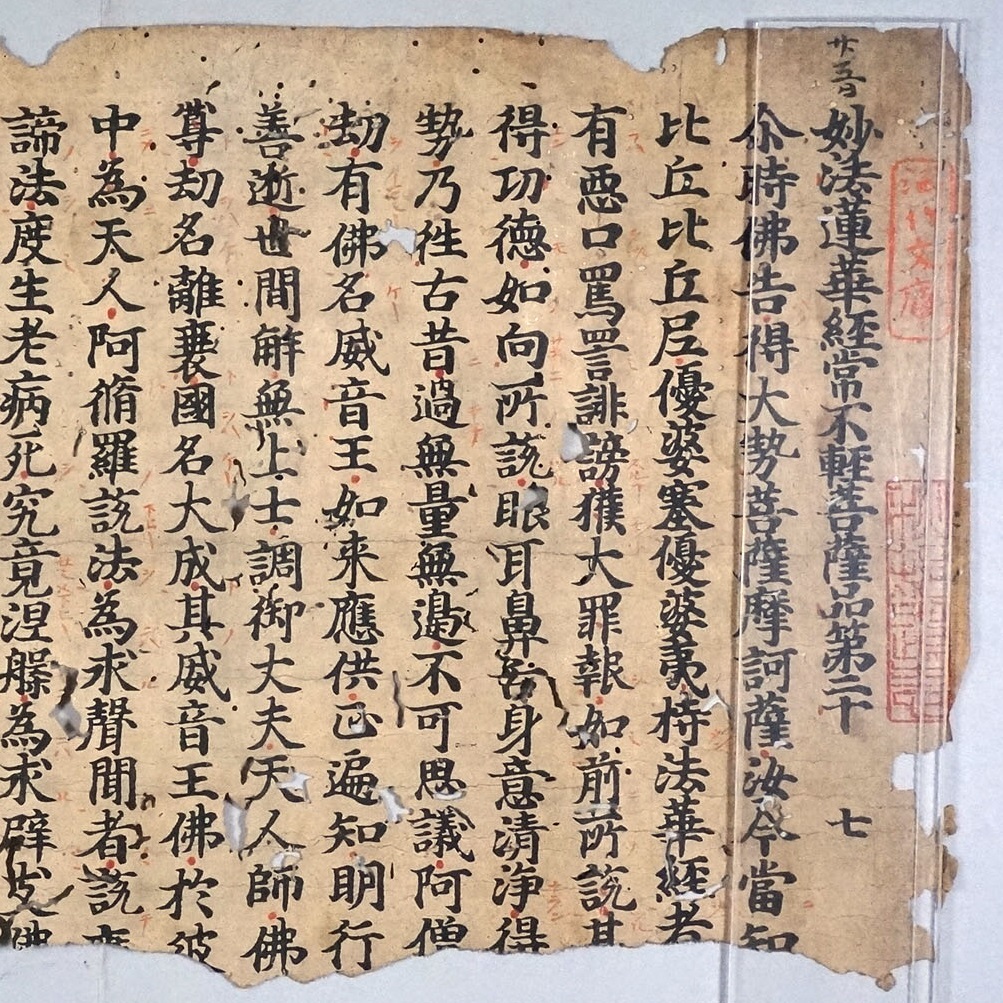
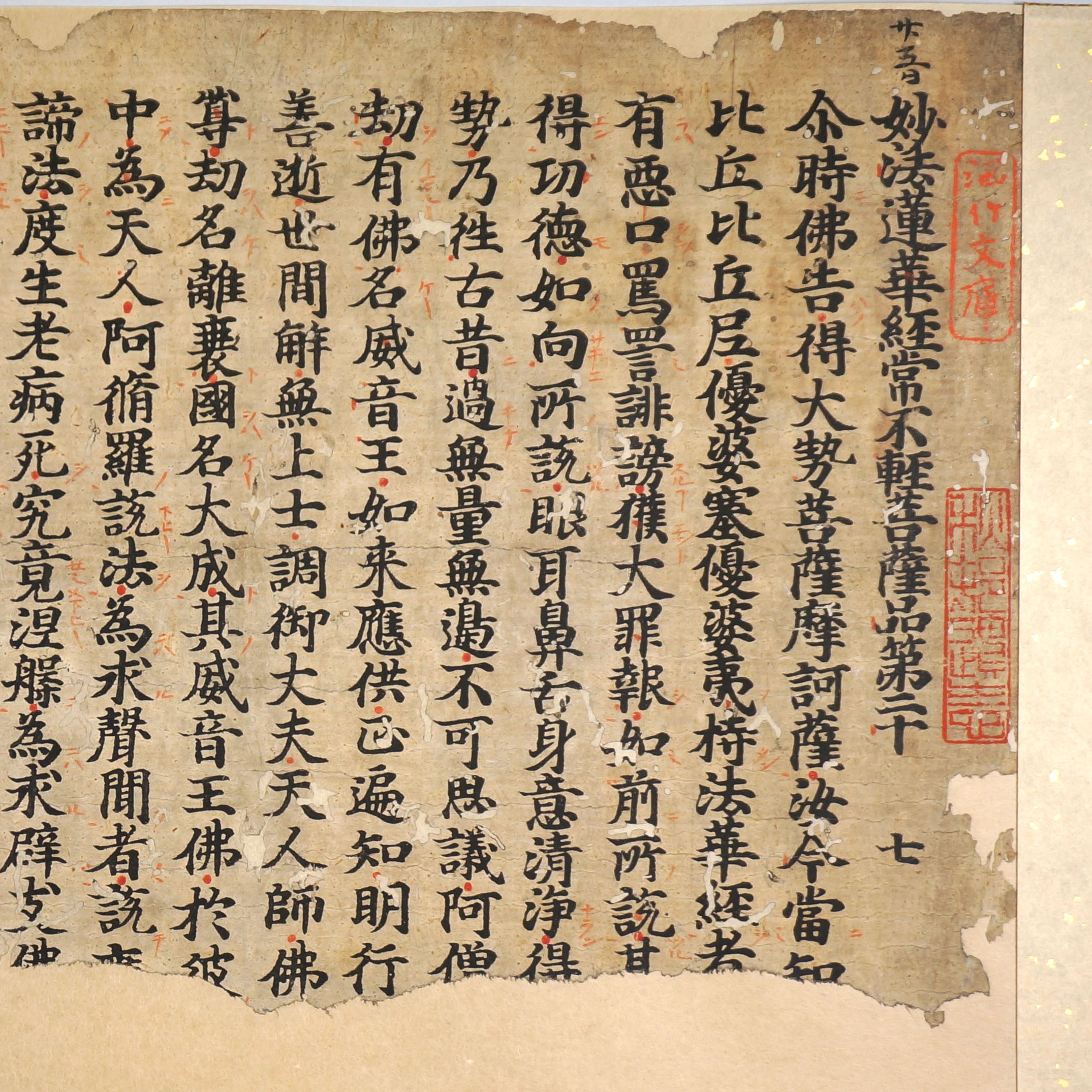
Digital photo-taking
Digital photos are taken using a suitable camera or scanner to make digital images. Large-sized materials are scanned by a no-contact, ultra-high resolution scanner into separate strips of images that are merged into one entire image later.
(Photos from left: Digital camera, digital scanner and scanning by a no-contact, ultra-high resolution scanner)
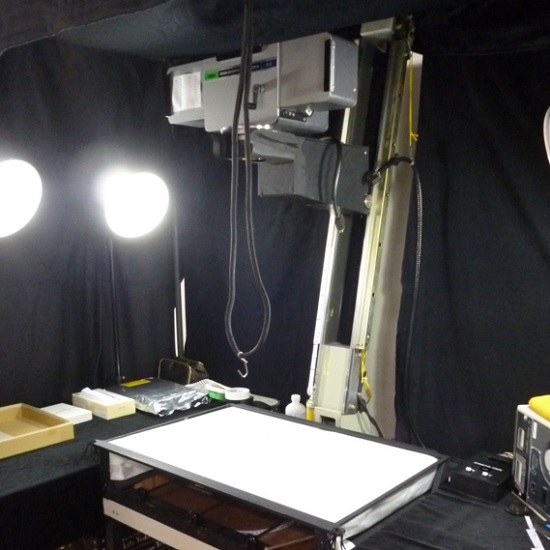
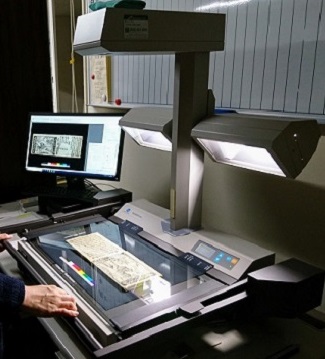
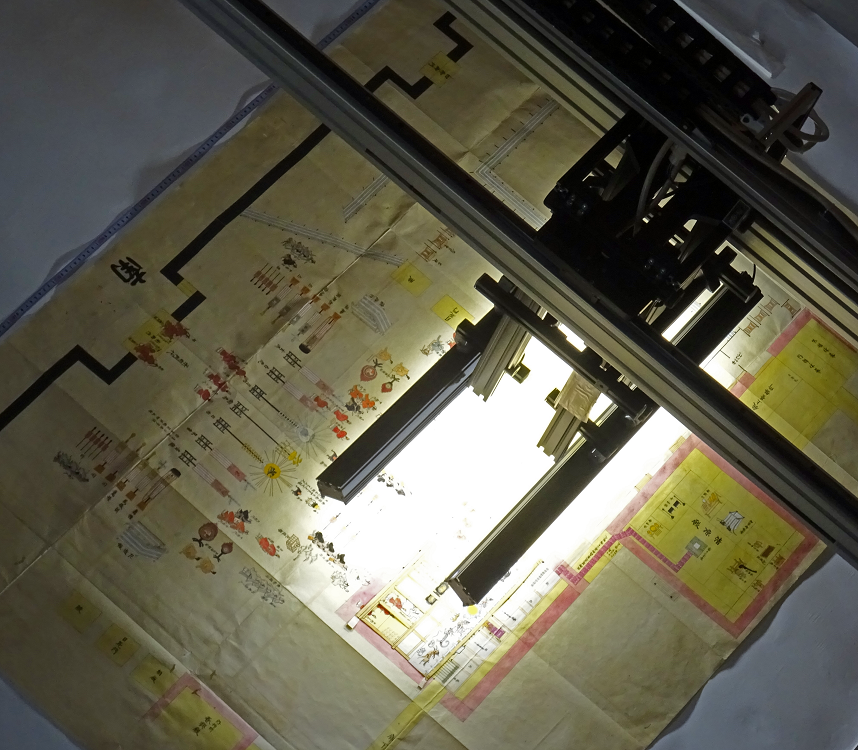
Compilation of metadata
Metadata, or basic information of rare materials including their title, creator, creation year, and physical condition, is compiled.
(Photo: a list of metadata)
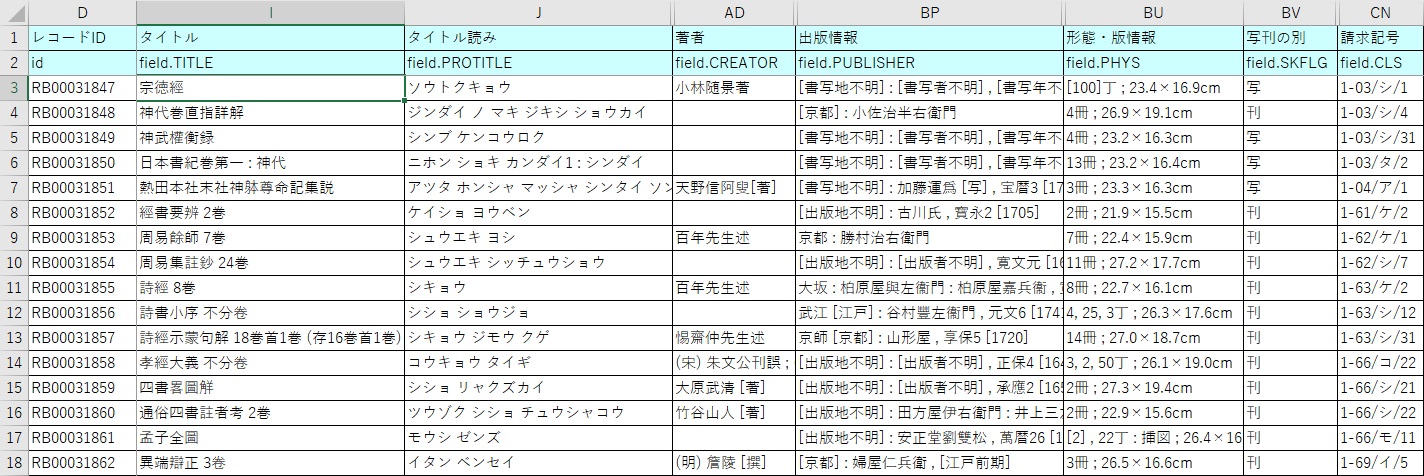
Release on the Internet
Digital images and their metadata are publicized in Kyoto University Rare Materials Digital Archive.
(Photos from left: Viewer of Kyoto University Rare Materials Digital Archive and metadata)
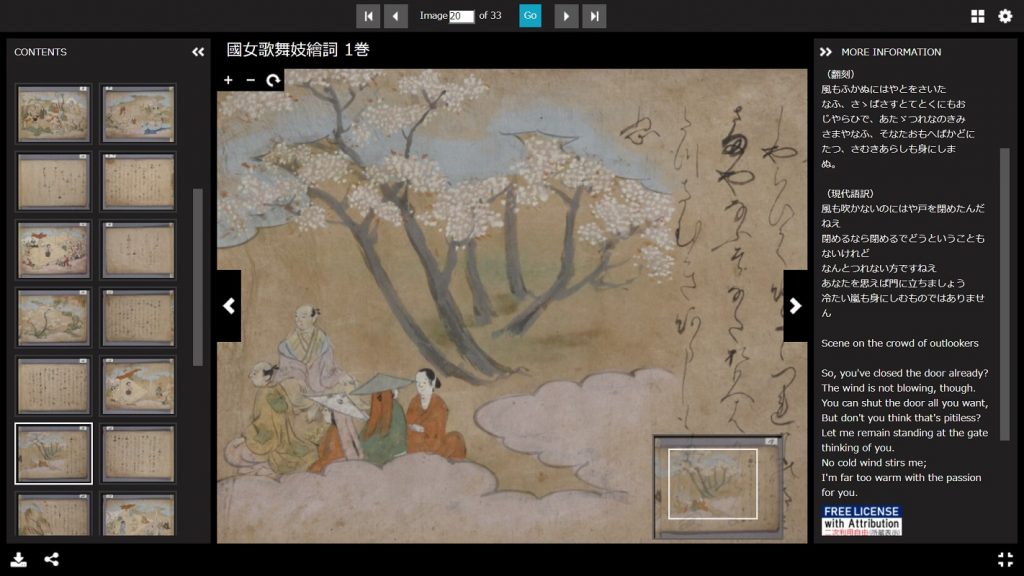
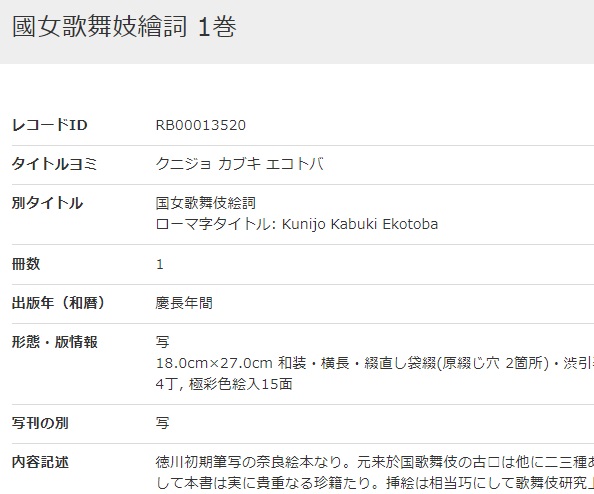
Free reuse of digital images
Most of the digital images publicized in Kyoto University Rare Materials Digital Archive are available for users to copy, adapt or redistribute in any medium without application or fee. Please refer to the "Guide for Content Reuse" for more detail.
(Photo: Nijo gojochu ezu of Nakai Collection the Main Library holds appears in World Heritage Nijo Castle Official Guidebook)
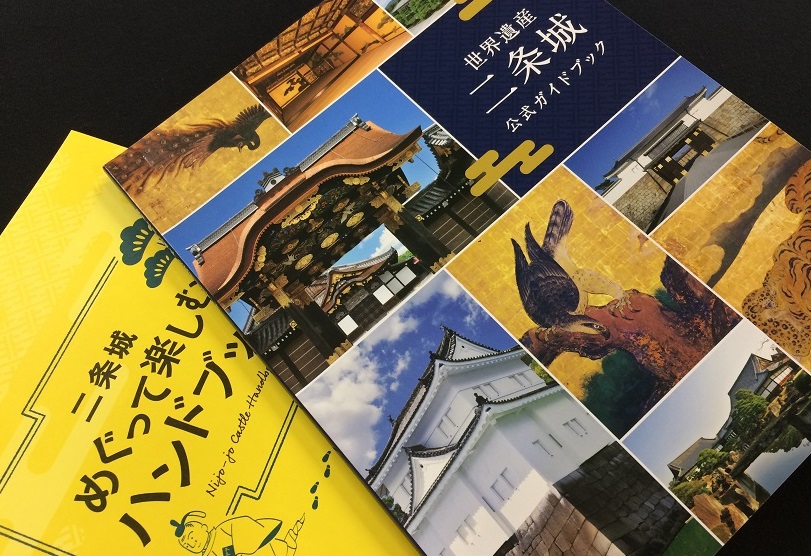
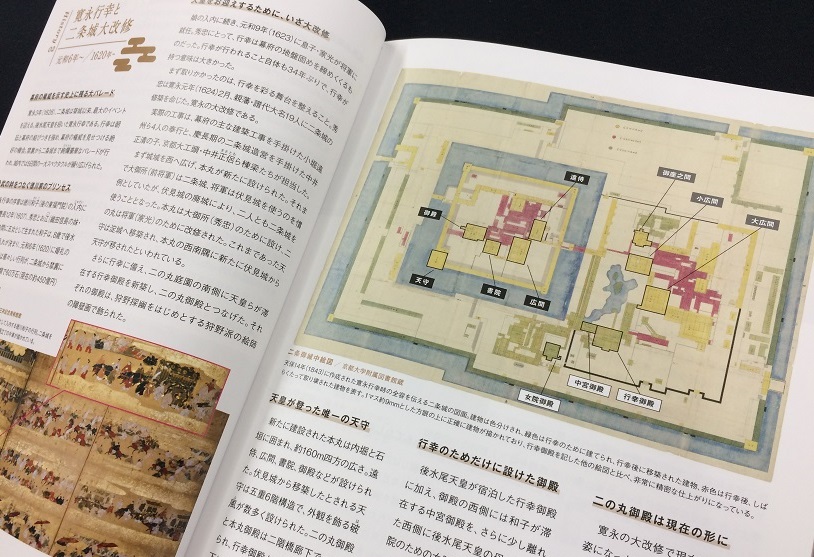
Your contribution to this project would be highly appreciated
Many rare materials in the library are waiting to be digitized, because the steps to make them open access, such as restoring damaged materials and taking digital photos of them with special care, require so much effort and cost. In order to secure financial resources for the project, Kyoto University Library Network administers the Kyoto University Rare Materials Digital Archive Fund, one of the university’s Project Support Funds. Please refer to this site for more detail.
Last update on Mar. 25, 2021
Library Planning Section, Library Planning Division, Main Library